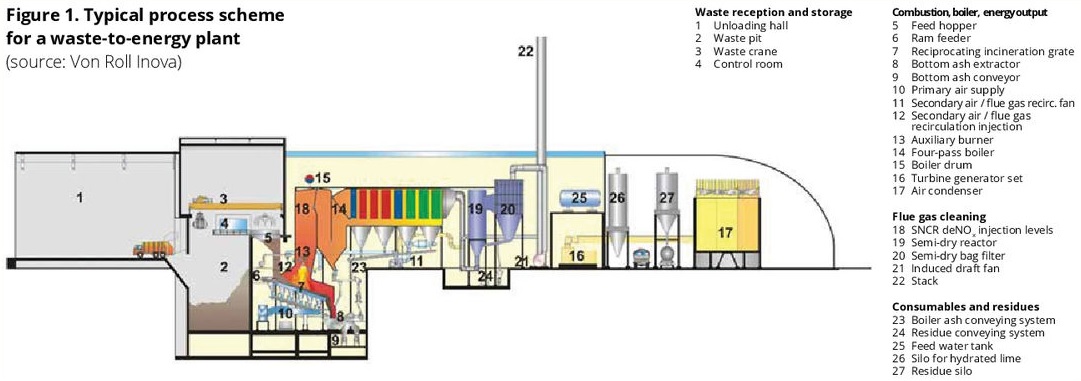
Among the most significant electrical consumers in a typical WtE plant are the primary and secondary air fans and most important of all, the induced draft fan. The power consumption of these fans, and therefore the overall electrical plant efficiency, is strongly influenced by the level of excess air in the combustion process.
Excess air, which constitutes a significant part of the flue gas volume, is necessary to enable sufficient burnout of exhaust gas as well as of solid residues (ie, slag and fly ash).
In the 1950s to the 1970s, WtE plants were operated with an excess air level of more than 12 vol% O2. The fans were operated at full motor load and the control was achieved by dampers. Combustion control was based on a limited number of slow sensors.
In the 1980s, the typical excess air level was reduced to around 8 vol% O2, which led to a reduction in energy consumption, together with the application of frequency converters.
In the 1990s, when the German “TA Luft” came into force, excess air was reduced to a minimum of 6 vol% O2, with a flue gas retention time of 2 seconds above 850°C. This was based on emission-related considerations to achieve a high burnout rate of organic waste gas components with state-of-the-art combustion control.
Nowadays, modern sensor technology for combustion control and optimised geometry of the combustion chamber enables excess air to be reduced to as little as 2.5 vol% O2 in order to minimise fan power consumption and maximise boiler efficiency, while maintaining flue gas quality.

The reduction in flue gas volume will also reduce the amount of fly ash in the boiler. On the other hand, changes in waste composition can cause boiler deposits which are more difficult to remove from heating surfaces.
Maintaining a “clean boiler” will always be the key issue to keep low flue gas pressure drop and high heat transfer coefficients. Indeed, despite the aforementioned improvements in combustion design, a boiler can only be operated successfully with an effective state-of-the-art cleaning system.
In autumn 2020, Explosion Power GmbH launched the SPGr-Series. This new version of its Shock Pulse Generator technology produces shock pulses by isochoric combustion of compressed air and natural gas, whereas the EG10-Series used natural gas and oxygen. Both SPG series clean the boiler online and automatically and can be applied from the highest flue gas temperature in the furnace to the lowest flue gas temperature in economisers or air heaters, working as well for membrane walls as for tube bundles.
SPGr-Series offers longer maintenance intervals and reduced maintenance cost. Orders for more than 80 SPGr have already been received, thus representing a rapidly growing share among the more than 900 Shock Pulse Generators delivered worldwide for a wide range of boiler capacities and fuels.
This article first appeared in Modern Power Systems magazine.






